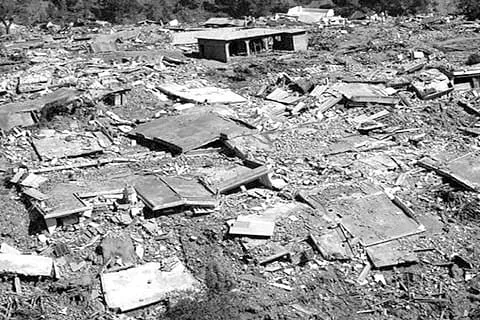If we talk about natural calamities – Tsunami, Cyclones, Tornadoes – we do have a system to predict them, and frankly speaking we get an ample time to act. When it comes to earthquakes a proper system has not been developed yet which can alert us before. But we have recently developed early earthquake warning system at Indian Institute of Technology Roorkee (IIT-R) which can predict minor to major earthquakes ranging from 10 seconds to a minute before the tremors. Such systems may prove very helpful if we are dealing with Nuclear power plants. At least the person in charge can get ample time to switch off the machinery without getting into kiosk. But when it comes to a typical residential house, traditional structures, flyovers, bridges, dams etc. we can’t do much in 10 to 60 seconds. So, we can say it’s still a mystery to accurately predict an earthquake at a particular location and time. A vigorous research is going on to exactly predict an earthquake at the department of earthquake engineering IIT-R, I’m hopeful our research group will come up with some interesting and lifesaving instruments in near future which will exactly predict the Earthquakes prior to seismic disturbances. We all know Jammu and Kashmir (J&K) is pinned under seismic zone 5 with highest seismicity It is referred to as the Very High Damage Risk Zone.
As witnessed in 2005 Kashmir Earthquake, the 7.7 magnitude earthquake ended up taking death toll to 79000. The culprit was unsafe buildings. After all, earthquakes do not kill, unsafe buildings do.
The extent of damage to buildings depends not only on the magnitude of the earthquake, but also on the type of construction practice followed in a particular region or country. For example, an earthquake in Tokyo or Los Angeles may result in damage of only a few buildings because strict construction regulations are adopted. But a similar earthquake may be catastrophic in J&K or other Himalayan regions, in terms of buildings damaged and lives lost, because the building design and construction practices are not adequately regulated.
There is much we can do to protect our buildings and thus save lives. It is possible today to assess the vulnerability of any building to earthquake, and, wherever possible, to undertake retrofit measures to make it safe.
The seismic forces generated increase with the mass and the height of the building. Therefore, it is desirable to adopt light-weight materials and low-rise structures in highly earthquake-prone regions, unless they are properly designed, detailed and constructed, based on the prevailing standards.
Most of the construction in our state are ‘non-engineered’ and built in masonry. Often, the connections between the roof and the walls, and between cross-walls, are weak, rendering such buildings vulnerable to collapse.
Disasters will happen, the thing that counts is what we can do pre-disaster to save loss of lives and property. Therefore, the only rescue left with us is to design the structures which not only resist the vertical loads but take proper care of seismic loadings too. All the important structures such as railway/roadway bridges, flyovers within our state have been already properly designed and carefully all the factors including seismic provisions have been taken care of. Recent earthquakes illustrate that the older buildings, which are not designed to resist earthquakes, have been damaged rather than the buildings which have been designed according to seismic codes. The question that may strike many minds is for how long will these structures resist to ground shakings. We have witnessed many such examples where structures resist high magnitude earthquakes and fail next year when struck with minor earthquakes. Apart from maintenance and proper monitoring the need is raised for seismic risk evaluation of all-important structures. Existing tunnels, railway/roadway bridges, flyovers within the state too need seismic evaluation reason being after the construction of such structures since past decade understanding on the mechanism of earthquakes has improved considerably. J&K is considered a region of highest seismicity but a large number of existing traditional buildings in our state, have inadequate seismic resistance, may create a serious risk.
The seismic evaluation is a tedious process, which considers design of building as well as deterioration of the material and damage caused to the building.
Seismic evaluation may prove to be an eye-opener for engineering fraternity to holistically understand risks, plan mitigations, and build resilience within the state. Depending on the seismic evaluation, a structure can be retrofitted to increase its capacity, or modified to decrease its seismic demand.
The final outcome of the initiative as a whole will be a seismic microzonation of J&K which will be available for administrators during an emergency at the click of a button.
Thus, we can safeguard the lives of our people by adopting proper channelized decisions, building design and construction practices.
Khalid Bashir is Junior Research Fellow, Department of Earthquake Engineering, Indian Institute of Technology, Roorkee
kbashir@eq.iitr.ac.in






